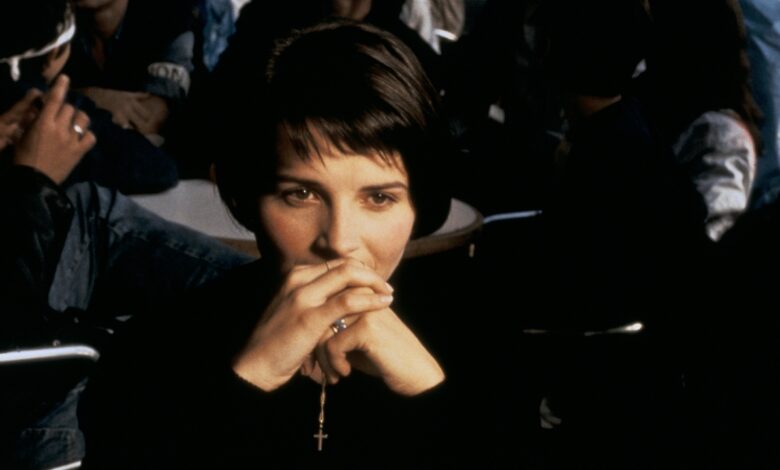Review Trois Couleurs: Bleu – Review on FilmTotaal


Director: Krzysztof Kieslowski | Screenplay: Krzysztof Piesiewicz, Krzysztof Kieślowski | Cast: Juliette Binoche (Julie de Courcy), Benoît Régent (Olivier Benoît), Florence Pernel (Sandrine), Charlotte Véry (Lucille), Hélène Vincent (Journalist), others | Time to play: 94 minutes | Year: 1993
Followed by the white and red of the tricolor turns Three colors: blue from Krzysztof Kieślowski’s trilogy of colors to the ideal of freedom of the French Revolution. That ideal comes in the form of isolation when Julie tries to sever all ties to her past after losing her daughter and husband in a car accident. However, she can’t help but make connections with others. For example, she helps finish the last symphony for her husband, a famous composer. However, instead of studying Julie’s pain, the film deals with transparent tricks.
It looks blue from the ruckus. Julie’s husband’s music (how much Julie contributed to her pieces remains an open question) remains a leitmotif, but what passes for brilliant sounds mostly like simplistic bombast by Kieślowski’s regular composer Zbigniew Preisner. Therefore, the last symphony in honor of the European community never comes close to Alle Menschen werden Brüder. When a striking flutist placed in the street repeats the tune, the kitsch is once again underlined.
In Three colors: blue each element functions as a literary metaphor. Julie stares in a daze at a nest of mice that radiates symbolism. The same goes for an exaggeratedly crooked old lady painfully slowly tossing a bottle into the bottle bank. Blue crystals from a chandelier appear multiple times on Julie’s face, an inadvertent metaphor for how Kieślowski is more concerned with embellishment than psychology. Film a necklace from a challenging vantage point, or open with a jaw-dropping image of moving car tires.
Due to this beautiful filming, Julie’s continuous coming and going also becomes one of the tricks with which her pain is kept at a distance. A tearful associative ending does little to change that. The world enveloped in a blue glow appears cold, which extends to all interactions. The TV shows Julie’s demented mother watches also ostentatiously focus on issues, so any trace of ambiguity disappears. The same goes for Binoche’s flat game. Her face always makes it easy to read where she is in her life.
The ruffles are most annoying when Julie dips a sugar cube into her coffee and it slowly turns brown. With the crisp editing and striking camerawork, Kieślowski feels distantly related to Jean-Luc Godard. But the latter deals with an intense close-up of a cup of coffee. 2 or 3 things I know about her for a moment of spiritual reflection. In Three colors: blue such an approach with all the hammering on thematics seems ridiculous.
Julie’s need to break free and her inability to do so linger in an indifferent haze. The laziness with which all the tricks impose meaning on the film impresses little, because it is easy to transfer all the weight. the bombast of Three colors: blue it suppresses any form of sincerity.